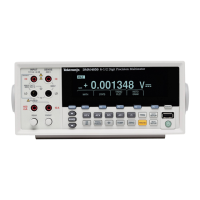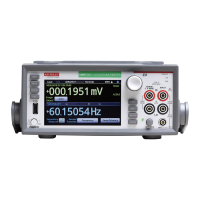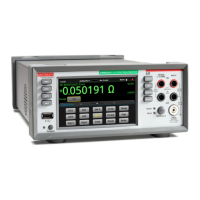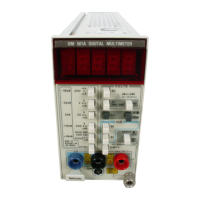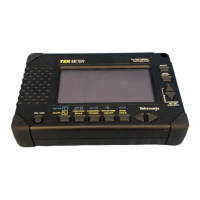DMM4040/4050
Users Manual
4-6
Measuring AC Voltage
To make an ac voltage measurement:
1. Press A.
The ac voltage icon VB will appear in display as shown below.
0.3861
mV
~
F1 F2 F3 F4 F5
caw022.eps
2. Connect the test leads to the Meter’s input as shown in Figure 4-1.
3. Connect the test leads to the circuit and read the measured voltage in the Meter’s
display.
Function modifiers:
Filter Displays the filter menu. For best accuracy and stable readings,
choose a filter based on the lowest frequency to be measured and the
performance needed.
3HZ SLOW Provides higher measurement accuracy on ac signals
between 3 Hz and 20 Hz. However, the measurement
cycle time is longer than it is when using the 20 Hz
filter.
20HZ Provides higher measurement accuracy on ac signals
between 20 Hz and 200 Hz. The measurement cycle
time is longer, however, than it is when using the
200 Hz filter.
200HZ Provides accurate measurements on ac signals 200 Hz
and above.
dB Displays the measured voltage as a decibel value referenced to a
stored relative value (dB = 20 log(Vnew/Vstored). The stored value is
obtained from the first measurement the Meter makes after pressing
the dB soft key. All future measurements are displayed using the
stored value as an offset. To take the Meter out of dB mode, press the
dB soft key.
dB€ Displays the measured voltage as a power decibel value referenced to
1 milliwatt (dBm = 10 log(power of Vnew into the reference
resistance / 1 mW) or 10 log(V
2
/R*1 mW) where R is the resistance.
To accommodate the various impedances that a dBm measurement
can be made across, the Meter allows for the selection of 21 different
impedance values.
To set the dB reference impedance:
1. Press L.
2. Press the soft key labeled dB€ Ref.
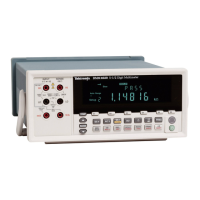
